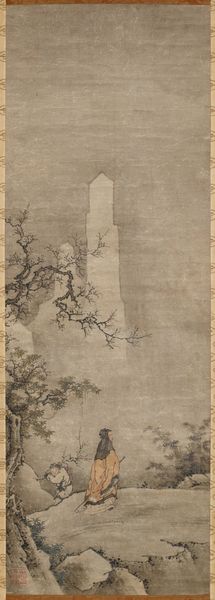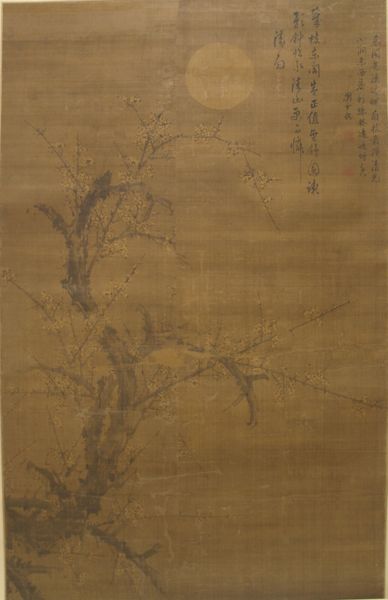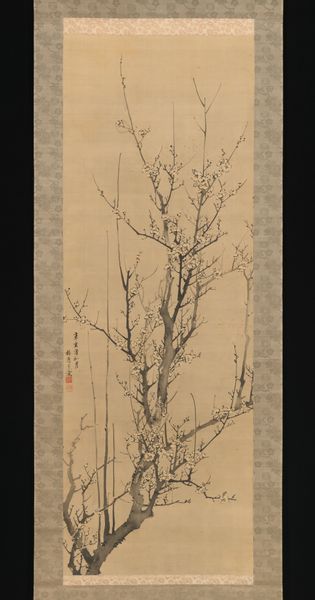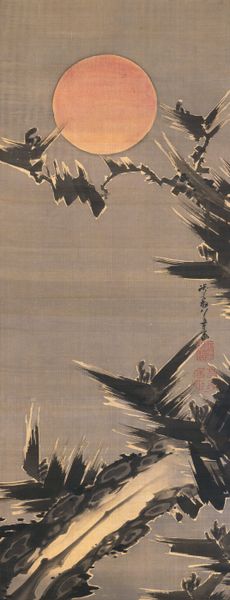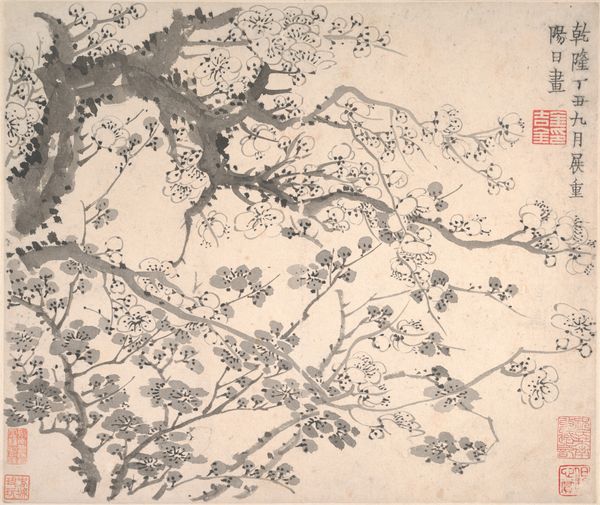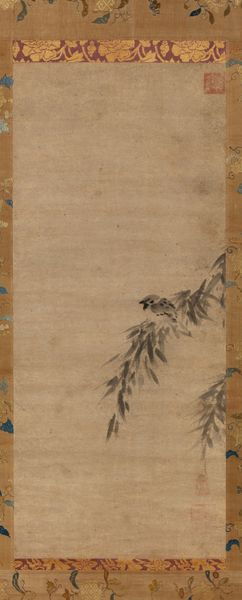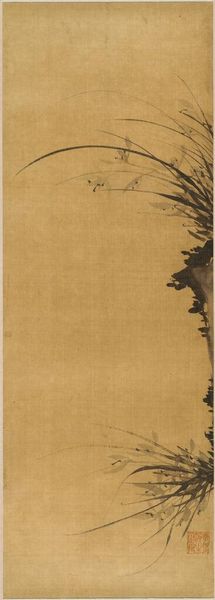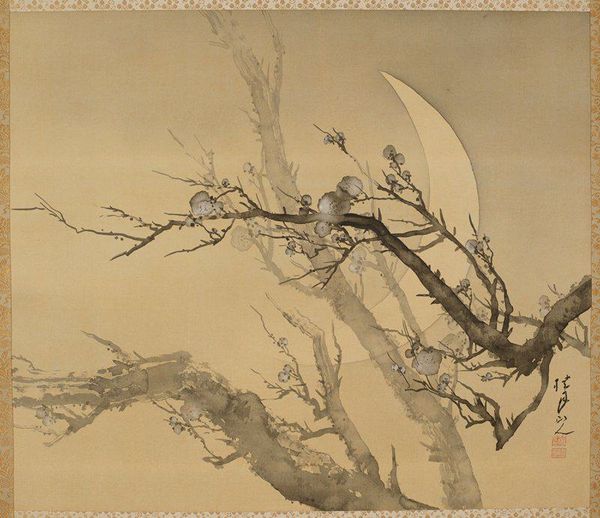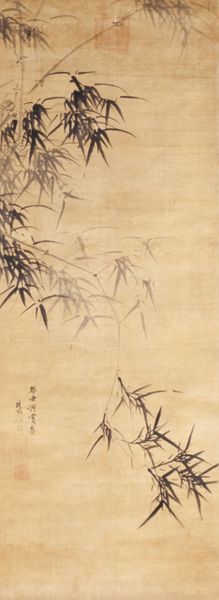
drawing, paper, ink
#
tree
#
drawing
#
asian-art
#
landscape
#
paper
#
form
#
ink
#
china
#
line
#
watercolor
#
calligraphy
Dimensions: Image: 67 3/4 x 37 1/8 in. (172.1 x 94.3 cm)
Copyright: Public Domain
Editor: This is "Prunus," a drawing in ink on paper attributed to Zhou Zonglian, dating sometime between 1532 and 1592. It's striking how such minimal means conjure so much. What do you make of the artist's compositional choices? Curator: Notice the delicate interplay of positive and negative space. The artist employs varying ink densities to define the tree's form and its blossoming branches, creating depth through contrast. Observe how line, as pure contour, defines shape. How do the stark branches offset the clustered blossoms? Editor: The branches definitely create an interesting diagonal line. Is it significant that it goes from the lower right up towards the upper left? Curator: Indeed. The ascending diagonal generates a sense of movement, guiding the viewer’s eye upwards. However, note the composition remains unresolved. What does it mean to suggest rather than state? Is the absence of complete, comprehensive information essential? Editor: So the incompleteness actually *adds* something to the piece, making it more dynamic? Curator: Precisely. Consider the significance of void within the composition. Void activates contemplation, offering more potential, more possibilities, not simply recording one moment. In this, can we find new appreciation for the placement of the calligraphy along the work's upper right-hand side? Editor: I never would have thought of that, but it all comes together— the visual form of the tree itself and the lines of script dancing along its form, all interdependent in how they give the piece shape. Curator: We gain the ability to discern formal relationships by exploring the artist's engagement with material and method, ultimately improving our understanding and appreciation.
Comments
No comments
Be the first to comment and join the conversation on the ultimate creative platform.
